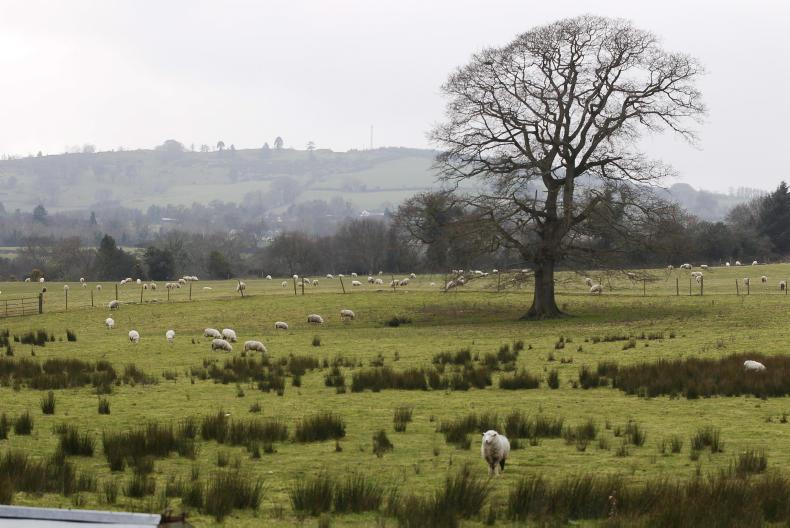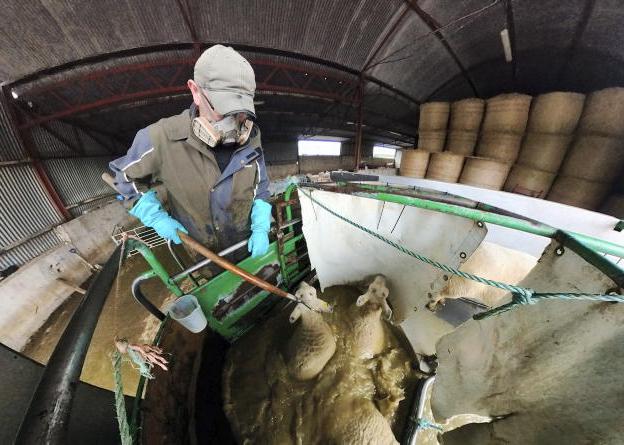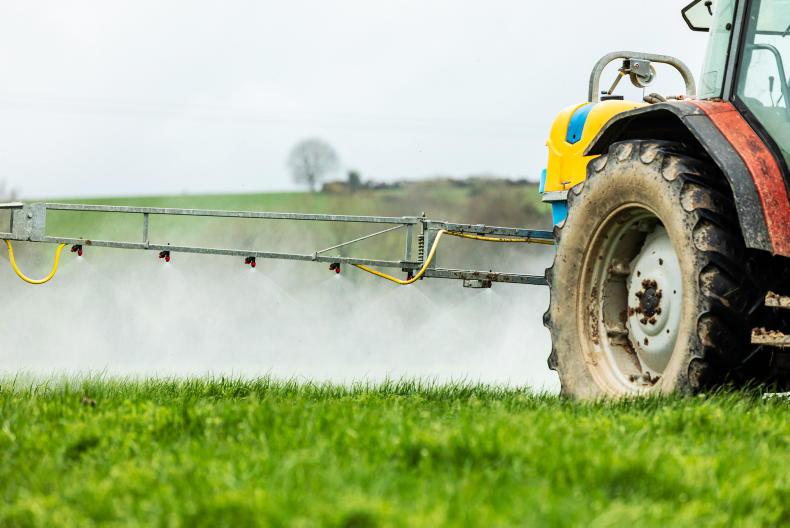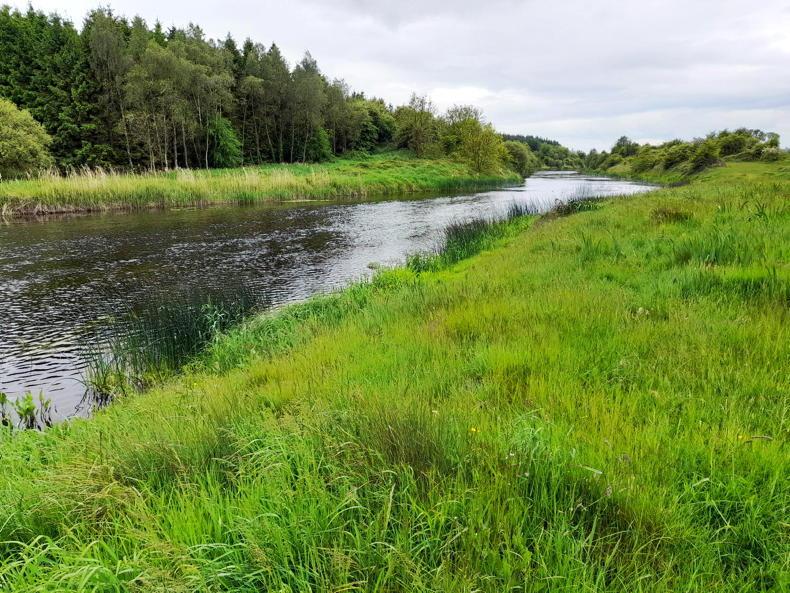A single rush plant can produce 8,500 seeds per year when left to its own devices. It thrives on wet, low-production land and has a habit of finding a way to return if left unchecked.
At a recent rush control and water quality event organised in Belturbet, Co Cavan, Teagasc adviser Niall McCabe ran through the five best ways to tackle rushes.
1. Non-chemical controls
McCabe said cutting or mulching rushes was a good place to start as it helped grass growth and ensured cross-compliance requirements were met.
Mulching can be particularly beneficial in fields where there is a strong rush infestation. Mulching the rushes saved cuttings having to be gathered.
By cutting older plants, McCabe explained that it weakened the plant and that a freshly growing rush had a thinner outer layer. This meant the plant would absorb a chemical easier.
2. Chemical controls
Trials in Northern Ireland showed cutting rushes alone meant 80% of the infestation returned the following year. This makes chemical use a necessary part of rush control.
As mentioned above, rushes should be cut six to eight weeks before applying chemicals to the regrowth.
MCPA accounts for 75% of all pesticide breeches in drinking water
Two chemicals are licensed to kill rushes in Ireland, MCPA and glyphosate.
McCabe said MCPA must be applied through a boom sprayer, not a knapsack. He advised farmers to be extremely cautious when using MCPA as it does not bind to soil and can be easily washed into watercourses.
MCPA accounts for 75% of all pesticide breeches in drinking water.
A sticking agent such as Torpedo will aid the spray in sticking to the rush.
Glyphosate can be applied through a weed licker. As it is most commonly available in the product Roundup, weed licking should not be carried out in high cover pastures as it also kills grass.
McCabe stressed that farmers should always read the label and follow the instructions for correct application of any product.
Spraying only or weed licking only saw 35% and 23% of rushes return the following year in the Northern Irish trials. Mulching combined with weed-licking reduced the rate of reinfection to 15%.
3. Grassland management
McCabe said pastures that were well-managed and grazed correctly were less likely to see rush infestations.
Rushes' tendency to grow in wet damaged swards meant avoiding poaching had to be a priority. He identified areas around ring-feeders or gateways as places where rushes could establish themselves and spread from there.
4. Soil fertility
Improving soil fertility could also help prevent rushes from entering the sward, McCabe said. He pointed to the fact that wetter soils usually had a lower pH along with suboptimal levels of phosphorus and potassium.
This prevented good grass growth which “keeps a lid on rushes”.
Testing soils to determine if additional lime or fertiliser is required can be a long-term way to prevent rushes.
5. Drainage
While there were few cheap drainage options, McCabe said lowering a field’s water level was the only long-term prevention to a rush problem.
Drying fields made them less suitable to rush growth, he said.
In cases where drains had already been created, it was important to ensure they were maintained.
Read more
Controlling rushes using weed-wipers/lickers
Your farm: controlling rushes in Co Leitrim
A single rush plant can produce 8,500 seeds per year when left to its own devices. It thrives on wet, low-production land and has a habit of finding a way to return if left unchecked.
At a recent rush control and water quality event organised in Belturbet, Co Cavan, Teagasc adviser Niall McCabe ran through the five best ways to tackle rushes.
1. Non-chemical controls
McCabe said cutting or mulching rushes was a good place to start as it helped grass growth and ensured cross-compliance requirements were met.
Mulching can be particularly beneficial in fields where there is a strong rush infestation. Mulching the rushes saved cuttings having to be gathered.
By cutting older plants, McCabe explained that it weakened the plant and that a freshly growing rush had a thinner outer layer. This meant the plant would absorb a chemical easier.
2. Chemical controls
Trials in Northern Ireland showed cutting rushes alone meant 80% of the infestation returned the following year. This makes chemical use a necessary part of rush control.
As mentioned above, rushes should be cut six to eight weeks before applying chemicals to the regrowth.
MCPA accounts for 75% of all pesticide breeches in drinking water
Two chemicals are licensed to kill rushes in Ireland, MCPA and glyphosate.
McCabe said MCPA must be applied through a boom sprayer, not a knapsack. He advised farmers to be extremely cautious when using MCPA as it does not bind to soil and can be easily washed into watercourses.
MCPA accounts for 75% of all pesticide breeches in drinking water.
A sticking agent such as Torpedo will aid the spray in sticking to the rush.
Glyphosate can be applied through a weed licker. As it is most commonly available in the product Roundup, weed licking should not be carried out in high cover pastures as it also kills grass.
McCabe stressed that farmers should always read the label and follow the instructions for correct application of any product.
Spraying only or weed licking only saw 35% and 23% of rushes return the following year in the Northern Irish trials. Mulching combined with weed-licking reduced the rate of reinfection to 15%.
3. Grassland management
McCabe said pastures that were well-managed and grazed correctly were less likely to see rush infestations.
Rushes' tendency to grow in wet damaged swards meant avoiding poaching had to be a priority. He identified areas around ring-feeders or gateways as places where rushes could establish themselves and spread from there.
4. Soil fertility
Improving soil fertility could also help prevent rushes from entering the sward, McCabe said. He pointed to the fact that wetter soils usually had a lower pH along with suboptimal levels of phosphorus and potassium.
This prevented good grass growth which “keeps a lid on rushes”.
Testing soils to determine if additional lime or fertiliser is required can be a long-term way to prevent rushes.
5. Drainage
While there were few cheap drainage options, McCabe said lowering a field’s water level was the only long-term prevention to a rush problem.
Drying fields made them less suitable to rush growth, he said.
In cases where drains had already been created, it was important to ensure they were maintained.
Read more
Controlling rushes using weed-wipers/lickers
Your farm: controlling rushes in Co Leitrim









SHARING OPTIONS